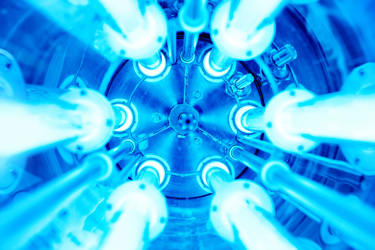How Do Ultraviolet Lasers Work?

UVs span from 150 to 400 nanometers. This is a short wavelength for a laser, and that has a lot of advantages.
The short wavelength translates to a small spot size, which in turn means great spatial resolution. UV lasers can also cut and mark with almost no thermal distortion. What’s more, they are compatible with a plethora of materials. All this combines to make them the go-to laser for sensitive high-precision applications.
On the flip side, getting a UV laser up and running has required some hard work from the scientific and engineering community.
First of all, the optics required are very special, because UV light quickly degrades traditional optics and is very sensitive to defects. Not to mention that generating a laser beam of UV wavelength is a challenge in and of itself. A problem to which the world has found 2 distinct solutions.
Get unlimited access to:
Enter your credentials below to log in. Not yet a member of Photonics Online? Subscribe today.
